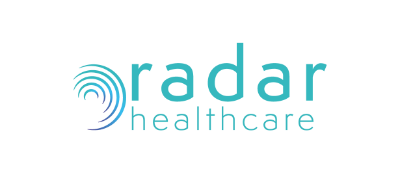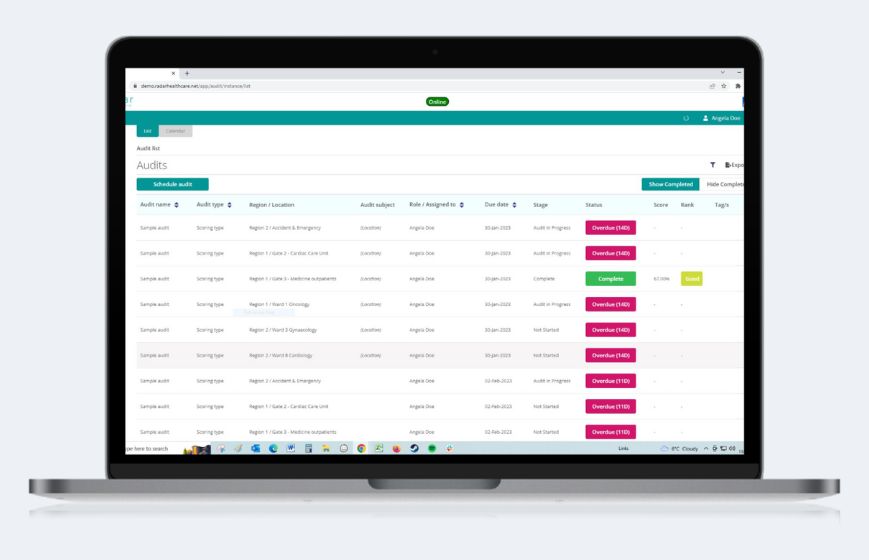Radar Healthcare in the top 10% of UK organisations for customer experience
22 July 2020
Following this year’s annual customer survey, Radar’s customers gave Radar a Net Promoter Score of 51, placing Radar in the top 10% of brands in the UK when it comes to customer experience.1.
We’re extremely proud of this achievement, so we spoke to our product manager, Mark Fewster to find out a bit more about what this means for a tech organisation like ours.
What is a Net Promoter Score?
Net Promoter Score (NPS) is a management tool to measure customer experience
Basically we ask our customers to rate us on a 0-10 scale by asking them the question “How likely is it that you would recommend Radar to a friend or colleague?”.
Based on those scores customers are then categorised as follows:
| Detractors
Customers that give a score lower or equal to 6. They are not particularly thrilled by our product or the service. |
Passives
Customers that give a score of 7 or 8. They are somewhat satisfied but could easily switch to a competitor’s offing if given the opportunity. |
Promoters
Customer that give a score of 9 or 10. They love the company’s products and services. |
The NPS is determined by subtracting the percentage of customers who are ‘detractors’ from the percentage of ‘promoters’.
What is generated is a score between -100 and 100 called the Net Promoter score. At one end of the spectrum, if when surveyed, all of the customers gave a score lower or equal to 6, this would lead to an NPS of -100. On the other end of the spectrum, if all the customers were answering the question with a 9 or 10, then the total NPS would be 100.
Why does Radar use NPS as a way of measuring quality?
The main purpose of NPS lies in helping Radar track and maintain our relationships with our customers. We’re obviously interested in a good NPS but that’s not where the process stops. It’s about listening to our customers – understanding what they think about us, good and bad. The supporting commentary around what we do well and what we can improve upon is just as important as the score itself, perhaps more so.
With this in mind, we don’t necessarily set ourselves specific NPS targets each year, but an incremental improvement is positive. If we take the feedback on board and demonstrate continuous improvement, then this should improve NPS organically.
How do you evaluate and act on customer feedback?
We’re really lucky in that our customers are great at delivering really honest and constructive feedback that we can actively then use to improve what we do.
The main action we take with this is to identify themes – is there something that multiple customers have identified as an issue? Or is there a particular feature that everyone has requested? This helps in terms of planning our roadmap and can help uncover customer problems and needs.
How has customer feedback impacted on the development of the software?
Customer feedback drives our change and underpins everything that we do as a business; we put the customer at the heart of our product development.
The “product” however is everything we do from initial sales to in life support. The customer journey is as integral part of the product as logging in and using the software itself.
In our initial survey in 2018 we uncovered frustrations around training and customers understanding how best to use the product. To help, we restructured how we provided support by creating our support team and product specialist roles to address that customer need. Without empirical data we may have hired a traditional account manager, when what our customers really needed was expert guidance on how to maximise their value from Radar.
In terms of the actual software, user experience has been a huge focus over the last couple of years. We ask customers to associate keywords with Radar such as easy, simple, confusing, complicated etc. In 2018, 23% of respondents used negative keywords which helped us identify a series of user interface and user experience improvements. In our 2020 survey, we have seen the effectiveness of that change with only 5% using negative keywords and 95% of customers overwhelmingly positive about using Radar.
All of our features are driven by customer and market feedback, from mobile first to improved UX, reporting, embedded digital adoption platforms, and smart KPIs – all of these features originated from feedback.
This year’s survey highlighted positive feedback about Radar’s responsiveness, how is the development process structured to deliver on this?
I would say our team. Radar’s culture is the most important factor in delivering excellent customer service. We are driven by customer need, so we are constantly asking: what is the problem they’re trying to solve? How are we answering that problem?
In terms of our process, we involve our customers each step of the way. Before we even get to the development stage for a particular feature, we:
- Hold customer and stakeholder workshops to explore development opportunities
- Collaboratively map out ideas and prioritise them
- Build prototypes to validate our understanding of the requirement
- Work together to refine the concept
We then create a Minimum Viable Product (MVP) which we can release to the customer in a Beta phase so that they can provide real-world user feedback to inform ongoing development.
Development suggestions aren’t just limited to our annual survey though – we also have a customer forum for feature ideas that other customers can ‘upvote’. We’ll then evaluate their priority based on both customer demand for the new feature and strategic alignment with our innovation roadmap. And the process is quick; we can typically respond to customer ideas to advise if and when they’re being progressed within a week of submission. Recent examples include our risk register developments and new and improved analytics.
As a growing business, how do you think Radar can make sure that the customers remain at the fore during that process?
As we scale, our product and customer success teams will obviously grow. We as a business need to ensure that regardless of our size every customer receives the same, high quality customer service that we’ve become recognised for. This is cultural and part of our company and product vision – everyone in the business shares that ideal and we need to continue to ensure that remains the case. We are successful because of our customers; it’s their ideas and feedback that help us not only shape what we do but uncover future products for Radar. If we lost that then we as a business would be poorer for it.
As Radar’s product manager, what does achieving such a positive NPS mean to you?
It makes me incredibly proud to be part of something that’s supports healthcare organisations and ultimately makes the world a safer place. We have managed to build an incredible team and each person has their part to play in our customer’s success. Continuous improvement is the basis on which Radar is built so it’s been important from day one to ensure that we practice what we preach and build that into our processes too.
About Mark
Mark has over a decade of experience in delivering transformational business change in management, product development and design, project management, business analysis and business intelligence. Having started his career as a data analyst, he quickly worked his way up into operational management roles, with a broad range of experience managing internet of things and big data products and solutions for SMEs to PLCs. Mark joined Radar as product manager in January 2018 and has since been instrumental in its product and service improvements.







